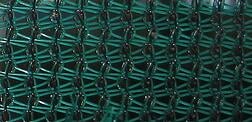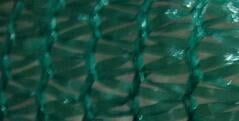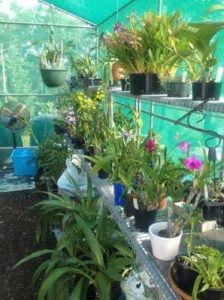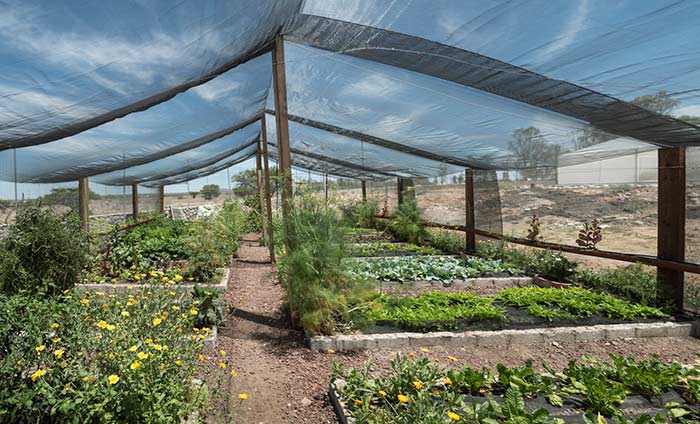What type of shade nets are there in the market?
There are two types of the most common types of shade nets : “knitted” and “woven”.
Knitted shade net price is affordable, durable, resistant to all type of weathers, pesticides, germicides, fungicides, and external vulnerabilities.


Tape to Tape Shade Net |
Mono to Mono Shade Net |
| Made of High-Density polyethylene | Made of High-Density Polyethylene |
Suitable for a variety of applications, including:
|
Suitable for a variety of applications, including:
|
| Open lockstitch design resists wind damage and reduces heat build-up and wind speed inside structures | Allows more heat build-up than knitted Shade cloth |
| Easy to install | Heavier (Less easy to install) |
| UV resistant | UV Stabilized to withstand the most extreme sun exposure |
| Edge taping is not needed | Edges must be taped to resist fraying and will unravel if cut |
| Resists most horticultural chemicals and detergents | |
| Longer life expectancy than woven shade cloth | |
| Allow for 2-3% stretch or shrinkage | Minimal stretch or shrinkage, less than knitted |

It is an enjoyable experience to see how quickly your cut flowers/plants grow in Spring. The temperature is comfortable and the environment is friendly to your plants. As summer approaches and the temperature outside begins to rise, you start to water your plants more. But have you thought of putting “sunscreen” on your plants!! —- Provide shade cloth to cover your plants as a shelter, this will save you water and energy as well as make your plants grow faster and be healthier. So you want to know types of shade nets ?
What you need to do is know more about this “sun screen” and choose the right one to protect your plantsfrom sunburn and other fatal factors under the fierce sun in summer.
So what is shade net?
Shade net was developed over 30 years ago to provide protection for plants from the harsh climate. Agro Shade net is used in many different applications in the domestic, horticulture, commercial, industrial, sport, leisure, and agriculture industries.
In summer, a shading net could be used to cover your shade house skeleton or greenhouse glazing, to cool it down for your plants. Hobbyists, growers, nurseries, gardeners, and farmers should protect their young plants from direct sunlight. Ideal for plants when they are establishing and then gradually hardening off, shade cloth is also used to shield pets, livestock, and people from sun and wind.
What is agro shade net made of?
Shade cloth is usually made of high-density polyethylene, warp-knitted, and can be found in varying densities or degrees of shade from approximately 5% to 95%. All shade cloth is water permeable so that rainwater, sprinklers, and irrigation systems can keep your plants hydrated.
As we can see from above, to protect your plants from extremely hot weather and make them grow healthily in hot summer, a knitted shade cloth is a better choice due to its life expectancy, functionalities, and easy installation.
What is Shade Percentages in Different Types of Shade Nets
Shade cloth is woven or knitted in different densities. We call the densities of Shade Cloth “Percentages”. The difference in percentage lets different amounts of sunlight to penetrate, which means that the percentage of shade cloth you choose, blocks out that percentage of the sun. Therefore, what you grow will help determine the percentage of shade cloth you need.
As we all know, sunlight is so crucial to a plants’ growth, so choose the right density and as low a density as you can get away with.
Usually a shade percentage in shade nets of 30-50% is ideal for vegetables, while 80-90% is ideal for sheltering people. Most plants will do best with a maximum of 40% – 60% shade. However, when growing some shade loving plants such as orchids and some ferns, 75% or higher maybe needed to get correct light levels.
Examples of shade cloth percentage suitable to your plants
50% Shade cloth in Green Colour |
75% Shade cloth in Green Colour |
| Suitable for:
• nursery stock |
Suitable for:
• orchids |
| Plants that require partial shade | Plants that enjoy the dense shade |
One of the most important aspects of choosing the right density of knitted shade cloth is that it should be applicable to the area where we live. Therefore, there are more people choosing a higher percentage shade cloth in the hot areas. And in lesser hot areas people choosing a lesser percentage of green shade net.
In Summary
If you cover your shade house with 50% or 75% shade cloth, all the way to the ground, a huge amount of heat load is dissipated by the cloth so it never gets into your shade house (try to mist or fog at regular intervals during extremely hot weather). Finally, know you will have a high return on your shade cloth investment by reduced energy costs and water costs. Talk about going green, talk about lowering your carbon footprint, shade cloth does it!
You put sun cream on your body; why not use sunscreen for your plants?
—— “Life is a shade better under a tree or shade cloth.”
(PS Usually, shade cloth is an important component of Shade house, to know more about shade house, head over to here)


